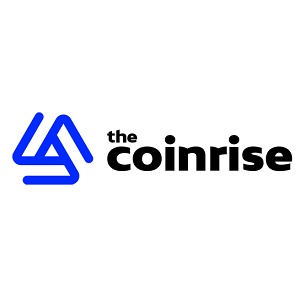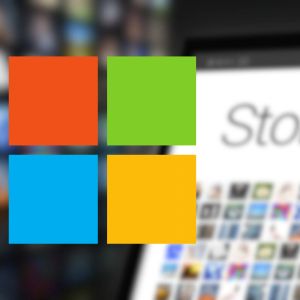In the rapidly evolving blockchain landscape, two standout players are driving institutional momentum in distinct but critical ways: Chainlink and XRP Ledger (XRPL). Though they serve fundamentally different purposes, both are playing pivotal roles in shaping the next generation of decentralized finance (DeFi), real-world asset (RWA) tokenization, cross-border transactions, and blockchain interoperability. Recent messari’s report delves into the unique strengths, recent developments, and institutional relevance of each solution, providing a comparative lens on how they are fostering greater institutional engagement. Chainlink: Powering Decentralized Data and Connectivity Chainlink operates as a decentralized Oracle framework designed to securely connect smart contracts with external data, APIs, and off-chain systems. Its role as a middleware layer makes it essential for expanding the scope of blockchain applications, especially in the DeFi ecosystem. Through secure, tamper-resistant data feeds and advanced automation capabilities, Chainlink ensures that smart contracts can reliably interact with real-world events, cross-chain protocols, and traditional financial infrastructure. According to the report, Chainlink’s market capitalization stands at approximately $10.1 billion, with its total token supply capped at 1 billion LINK tokens. Priced around $15.43, LINK sees daily trading volumes near $218.2 million. Notably, Chainlink has extended its Cross-Chain Interoperability Protocol (CCIP) to over 50 blockchains, positioning itself as a linchpin for seamless cross-chain interactions. Recent strides include pioneering tokenized securities solutions within the European Union and rolling out sophisticated tools like Smart Value Recapture with Aave, the Multistream enhancement for Data Streams, and broader automation functionalities. Despite notable price swings, LINK has demonstrated strong accumulation trends by large stakeholders, with analysts forecasting bullish long-term prospects. XRP Ledger: A Robust Platform for Payments and Institutional DeFi XRP Ledger (XRPL), often synonymous with the Ripple ecosystem, is an energy-efficient, high-speed blockchain purpose-built for financial transactions, cross-border remittances, and tokenized assets. Rather than relying on Proof-of-Work (PoW) or Proof-of-Stake (PoS), XRPL employs a federated consensus protocol that enables rapid, low-cost settlements—a feature highly attractive to banks and payment providers. Currently, XRP boasts a market capitalization of around $134.95 billion, with roughly 58.68 billion XRP tokens circulating. Trading at approximately $2.29, XRP records daily transaction volumes exceeding $1.9 billion. The XRP Ledger has seen an uptick in institutional DeFi initiatives, notably through developments like on-chain lending, the launch of Multi-Purpose Tokens (MPTs) for RWA tokenization, enhanced decentralized identity (DID) features, and the highly anticipated Ethereum Virtual Machine (EVM) sidechain slated for launch in Q2 2025. Ripple’s decisive win against the U.S. Securities and Exchange Commission (SEC) has further bolstered investor confidence, driving both price appreciation and a more favorable regulatory standing in the U.S. We are on twitter, follow us to connect with us :- @TimesTabloid1 — TimesTabloid (@TimesTabloid1) July 15, 2023 Significantly, Japan’s banking sector is spearheading institutional adoption, with 80% of Japanese banks expected to leverage XRPL for cross-border payments by the end of 2025. Despite occasional challenges, such as a node outage in late 2024 and a patched vulnerability in the xrpl.js library, the XRPL core protocol remains secure. Major milestones also include the integration of Band Protocol for decentralized oracle services, the introduction of Coinbase Wrapped XRP on Base, and the launch of Ripple’s RLUSD stablecoin across XRPL and Ethereum. Comparative Strengths and Institutional Impact Chainlink’s competitive edge lies in its ability to bridge on-chain and off-chain worlds. As the leading decentralized oracle provider, it is foundational for driving innovations in RWA tokenization, secure data feeds, and institutional-grade automation. Its success hinges on continued adoption across decentralized finance and broader enterprise data applications. Conversely, XRPL excels as a mature, enterprise-focused Layer-1 blockchain, offering unparalleled speed, low transaction costs, and regulatory-compliant features tailor-made for banks, fintech firms, and large-scale payment platforms. With its expanding DeFi capabilities and upcoming EVM compatibility, XRPL is well-positioned to capture growing institutional demand across payments, asset tokenization, and decentralized applications. Final Thoughts In essence, Chainlink and XRP Ledger represent two distinct pillars of blockchain innovation. For institutions seeking reliable, decentralized data connectivity, advanced automation, and cross-chain interoperability, Chainlink provides unmatched value. On the other hand, enterprises aiming for scalable, compliant, and fast financial settlement solutions will find XRPL’s feature set highly compelling, particularly as it broadens into DeFi and NFT ecosystems. While both ecosystems are experiencing robust growth and show promising long-term trajectories, they serve complementary, not competing, roles in the blockchain space. Chainlink acts as the essential oracle and middleware infrastructure, whereas XRP Ledger stands as a high-performance settlement and tokenization platform. By understanding the unique propositions of Chainlink and XRP Ledger, institutions can better position themselves to leverage the strengths of each solution in building the next wave of blockchain-powered financial systems. Disclaimer : This content is meant to inform and should not be considered financial advice. The views expressed in this article may include the author’s personal opinions and do not represent Times Tabloid’s opinion. Readers are urged to do in-depth research before making any investment decisions. Any action taken by the reader is strictly at their own risk. Times Tabloid is not responsible for any financial losses. Follow us on Twitter , Facebook , Telegram , and Google News The post Comparative Report By Messari: Chainlink vs. XRP Ledger appeared first on Times Tabloid .



















